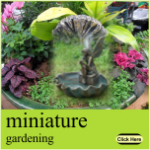We humans are too busy in our life that we don’t get enough time for workouts or any creative things that can bring us close to the nature. When we disconnect ourselves from nature our productivity in every work starts decreasing. So to get better results we need to adopt activities like gardening as a hobby. It purifies our thought and tends to generate better ideas. Desirable things can be produced in gardens that are beneficial to us.
Maintaining garden means dealing with the set of tasks month by month. Typically plants are grown based on location or purpose of the gardener.  Selection of desired seeds is necessary following the right time of a year to cultivate a preferred garden. It helps us to receive nourished foods like bananas, oranges, carrots and spinach. Empty ground can be filled with colorful flowers like daffodil, rose, mums and holly berry and can make surrounding full of nice fragrance. Garden can also be maintained for indoor purpose as miniature garden. Any desired container can be used to create miniature garden with dwarf trees like firelight spiraea, royal empress tree, weeping cherry etc. These trees grow slowly and needs less maintenance. This type of garden makes indoor area more attractive.
Selection of desired seeds is necessary following the right time of a year to cultivate a preferred garden. It helps us to receive nourished foods like bananas, oranges, carrots and spinach. Empty ground can be filled with colorful flowers like daffodil, rose, mums and holly berry and can make surrounding full of nice fragrance. Garden can also be maintained for indoor purpose as miniature garden. Any desired container can be used to create miniature garden with dwarf trees like firelight spiraea, royal empress tree, weeping cherry etc. These trees grow slowly and needs less maintenance. This type of garden makes indoor area more attractive.
Plants needed to be grown according to the season and following their life cycle.
Categories of Plant life Span:
- Annual plants or annual flowering plants complete its cycle process within one year. This type of plant generally grown using seeds. In one year
 plants grow, produce flower, generate seeds and die in a year. Annual plants are good option for having colorful flowers in garden. This type of plant is good for those gardeners who want to have the change in design in their garden after one year. We can grow annual plants by using different kinds of borders that suits best for our garden. Examples of annual plants are aster, beans, maize, marigold, watermelon, peas, portulaca, rice, wheat, etc.
plants grow, produce flower, generate seeds and die in a year. Annual plants are good option for having colorful flowers in garden. This type of plant is good for those gardeners who want to have the change in design in their garden after one year. We can grow annual plants by using different kinds of borders that suits best for our garden. Examples of annual plants are aster, beans, maize, marigold, watermelon, peas, portulaca, rice, wheat, etc.
- Biennial plants require two years to complete its life cycle and take two years to grow completely from seed, bloom/plant and then die to become seed. In first year biennial plants grow and store food in the form of chlorophyll and in second year they produce flower. In cold seasons the life cycle of biennial plants may be completed early. There are biennial plants that are grown for their eatable roots and green leaves. Examples of biennial plants are broccoli, delphinium, echium vulgare, fox glove, primula, parsley, wild cabbage, etc.
- Perennials plants live longer than two years and continue growing for many seasons.
 We need not plant it again and again for years. They just needed to be planted once and they bloom many times. Perennial plants require deep and direct watering to soil so that the deep root can receive water properly to reduce the disease of leaves. Usually perennial plants can tolerate sunlight for six to eight hours per day. Examples for perennial plants are water lily, basil, bee balm, cardinal flower, chives, kale, lavender, turnip, sweet potato, rosemary, sedum, etc.
We need not plant it again and again for years. They just needed to be planted once and they bloom many times. Perennial plants require deep and direct watering to soil so that the deep root can receive water properly to reduce the disease of leaves. Usually perennial plants can tolerate sunlight for six to eight hours per day. Examples for perennial plants are water lily, basil, bee balm, cardinal flower, chives, kale, lavender, turnip, sweet potato, rosemary, sedum, etc.

